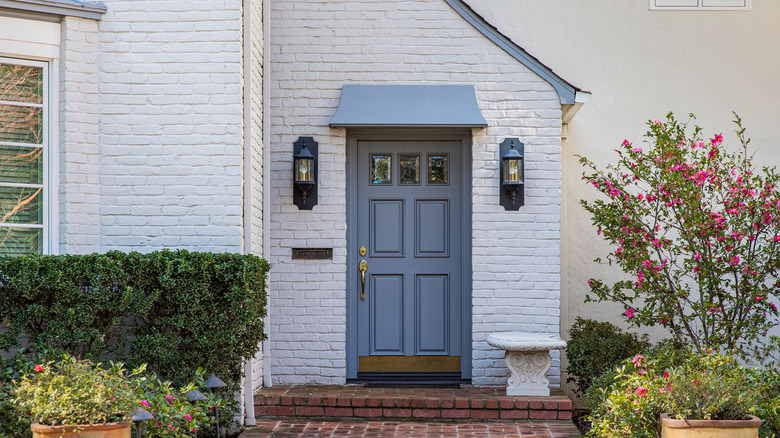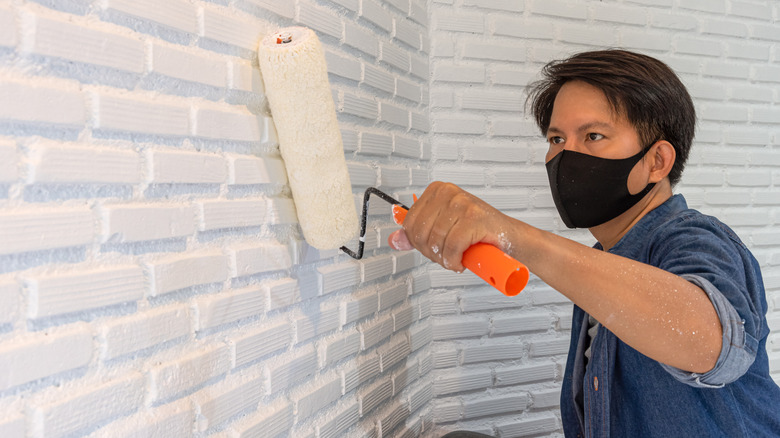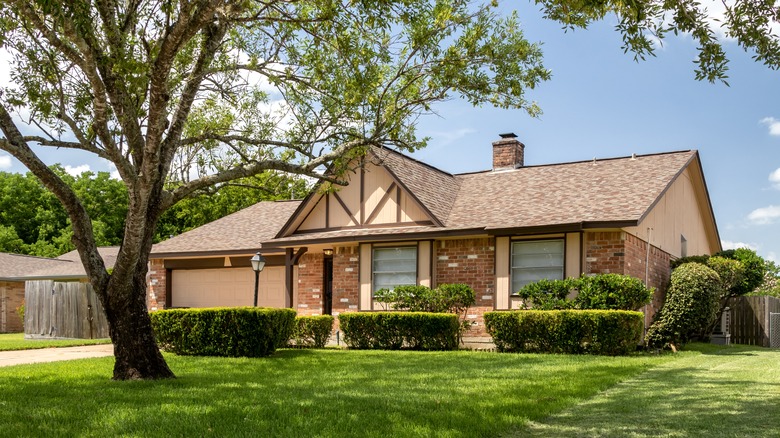Does Painting Your Home's Brick Exterior Hurt Its Resale Value?
Painting the exteriors of your brick home is an easy way to give your property a modern facelift, but many homeowners fail to consider the long-term impacts of this decision. Paint is permanent, and once you commit to your project, there's no way to bring the brick back to its natural tone. Before picking up the roller, consider the pros and cons of undergoing this process and if you'll be happy with your decision 5, 10, or 20 years later.
According to MasterClass, trends undergo a cycle of perpetual resurgence and fading. This "20 year rule" is most commonly associated with fashion, but home décor and design trends run on the same clock. Painted brick may be trendy right now, but it could feel tacky and dated in a decade. Of course, the fun part of style is that it's your own, but trends are important to consider if you're looking to put your home on the market.
Necessary considerations
Brick is a porous, natural surface, so painting the exterior of your home requires a great deal of preparation and maintenance. According to the Brick Industry Association, façades should be touched every three to five years. Environmental factors like heat and humidity can affect how long your paint lasts, and costs for materials or professional services can add up quickly. While it may seem like a fast and relatively inexpensive way to boost curb appeal, it's a project that requires investment over time.
It's also important to consider if your brick is a candidate for painting in the first place. It typically isn't a good idea if your goal is to cover up cracks and damage. Painting over imperfections or mold can trap moisture in the material, causing more damage, deterioration, and chipping down the line, via Turnbull Masonry Ltd. It may look brand new, but that DIY project is just covering up and worsening the issues at the core.
Other options
If you're still looking for a way to revamp your exteriors, there are fewer extreme options than painting. Brick staining allows you to change the color of your home while still revealing the texture of the brick underneath. It's more subtle and requires less upkeep than a full paint job, typically holding up for around 20 years, via Chicago Brick Company, but it's still a permanent process. If the goal is to cover or conceal damaged brick, painting or staining is a quick fix that can lead to more issues. Repair the problem at the source to boost your property value instead of using a bandaid.
If you're genuinely in love with the look of painted brick exteriors, go for it. It's a quick way to create a significant impact, but maintenance and trends down the line might leave you regretting your decision if you don't weigh the options. If you're looking to sell, don't make a permanent decision based on a temporary fad. You'll be grateful you stuck with a classic look for a few years.


